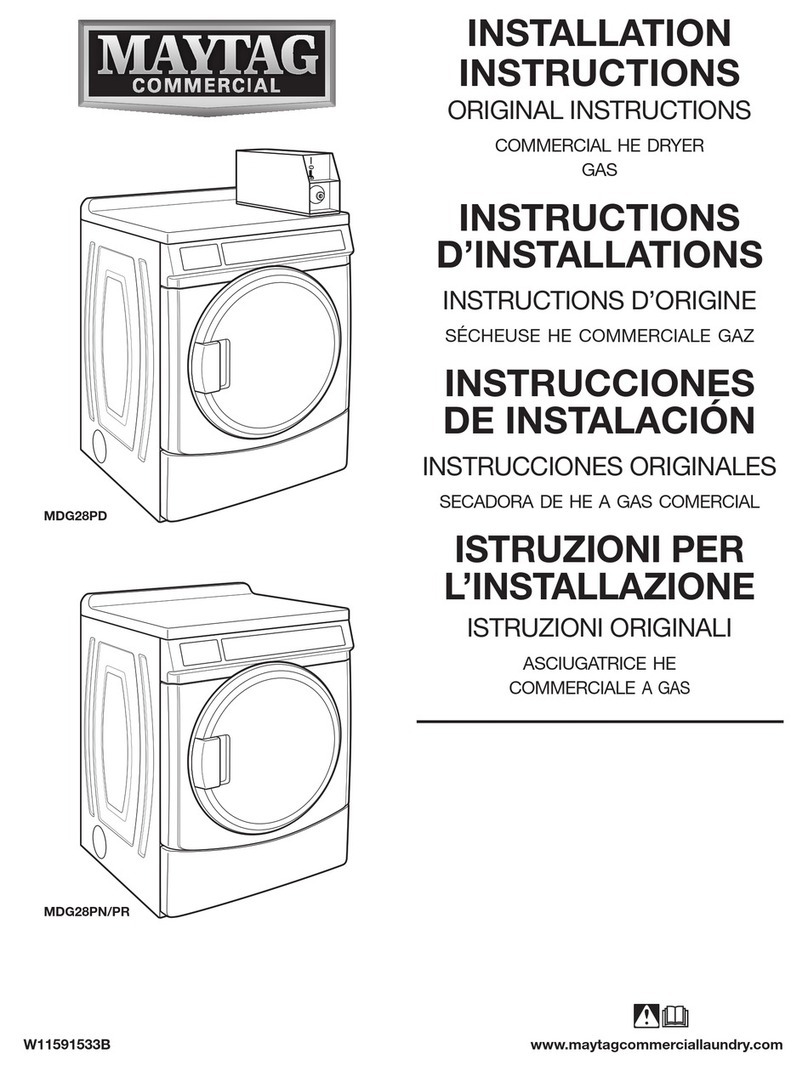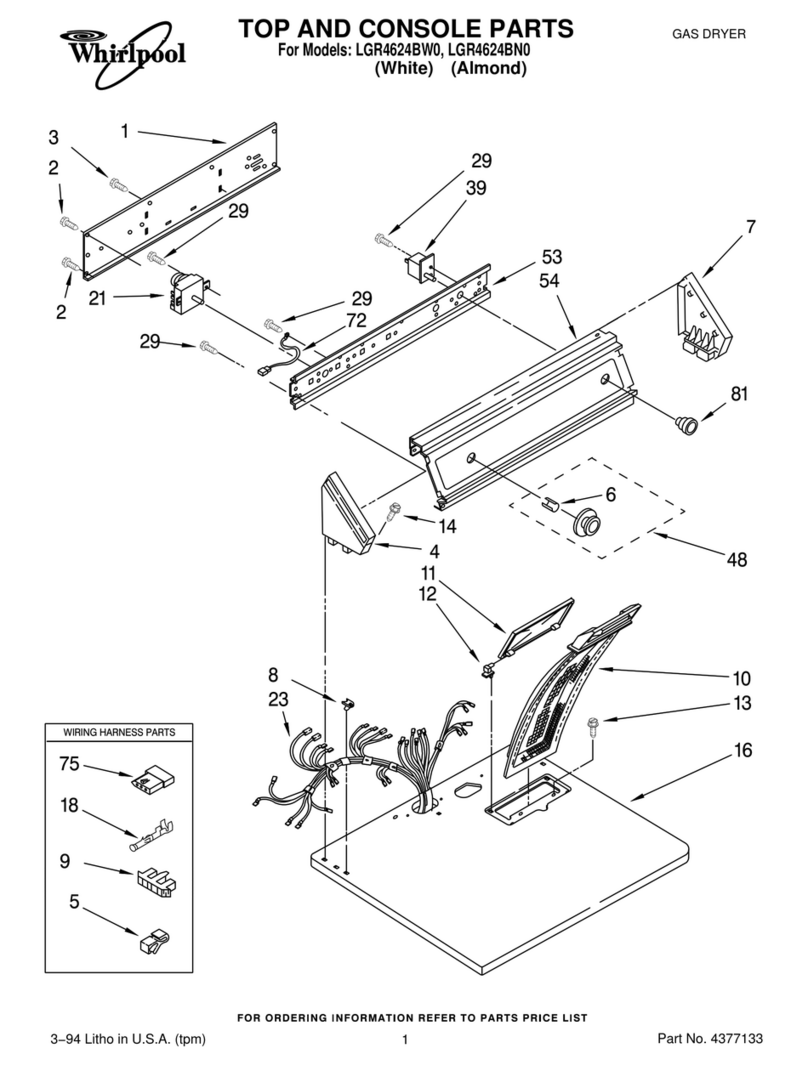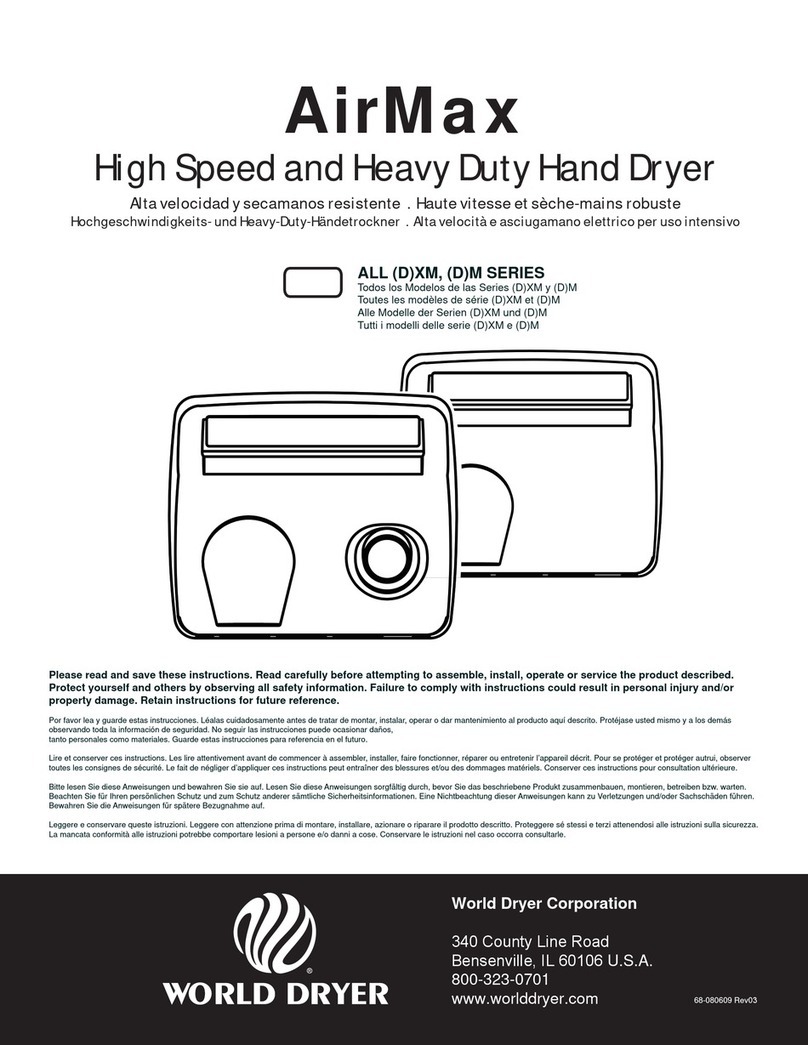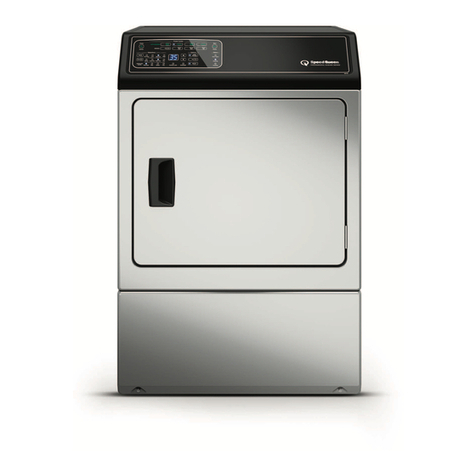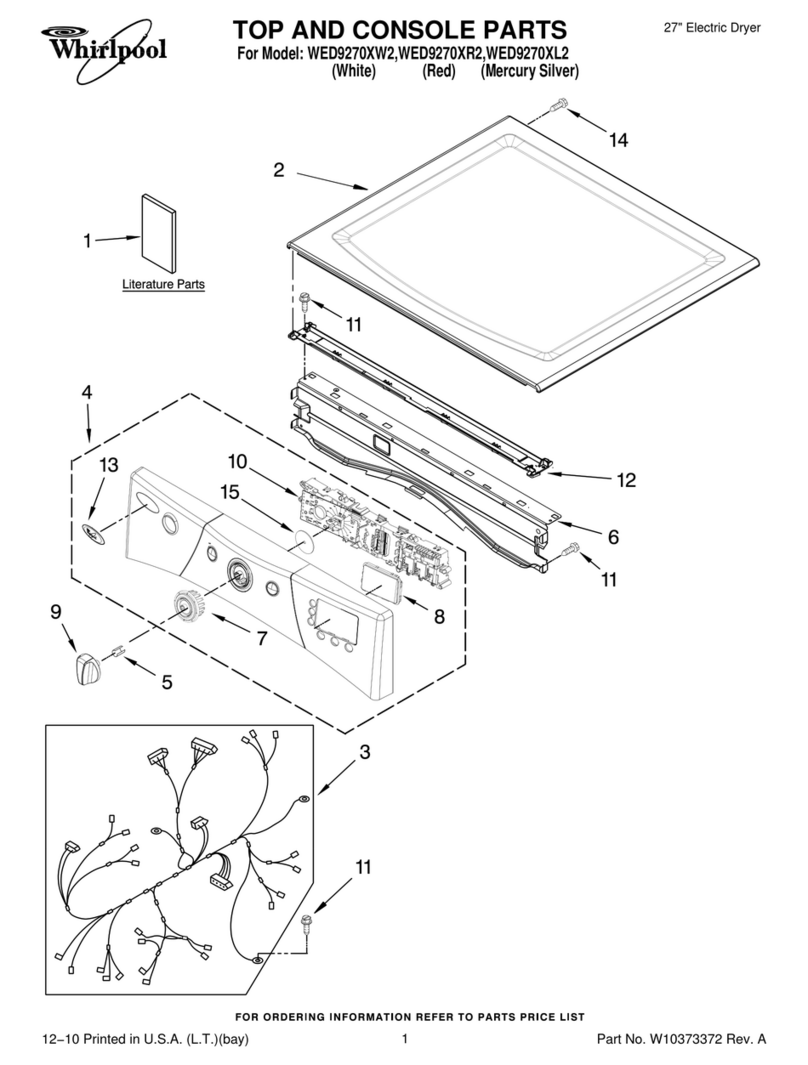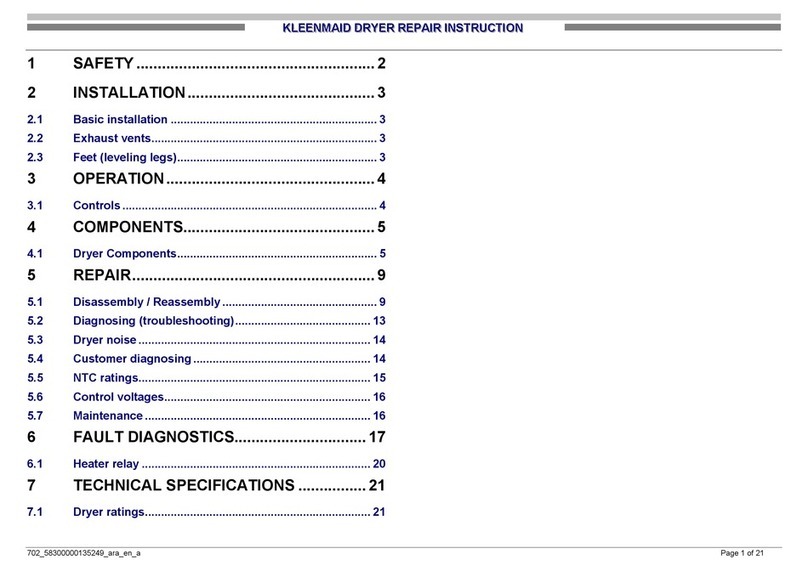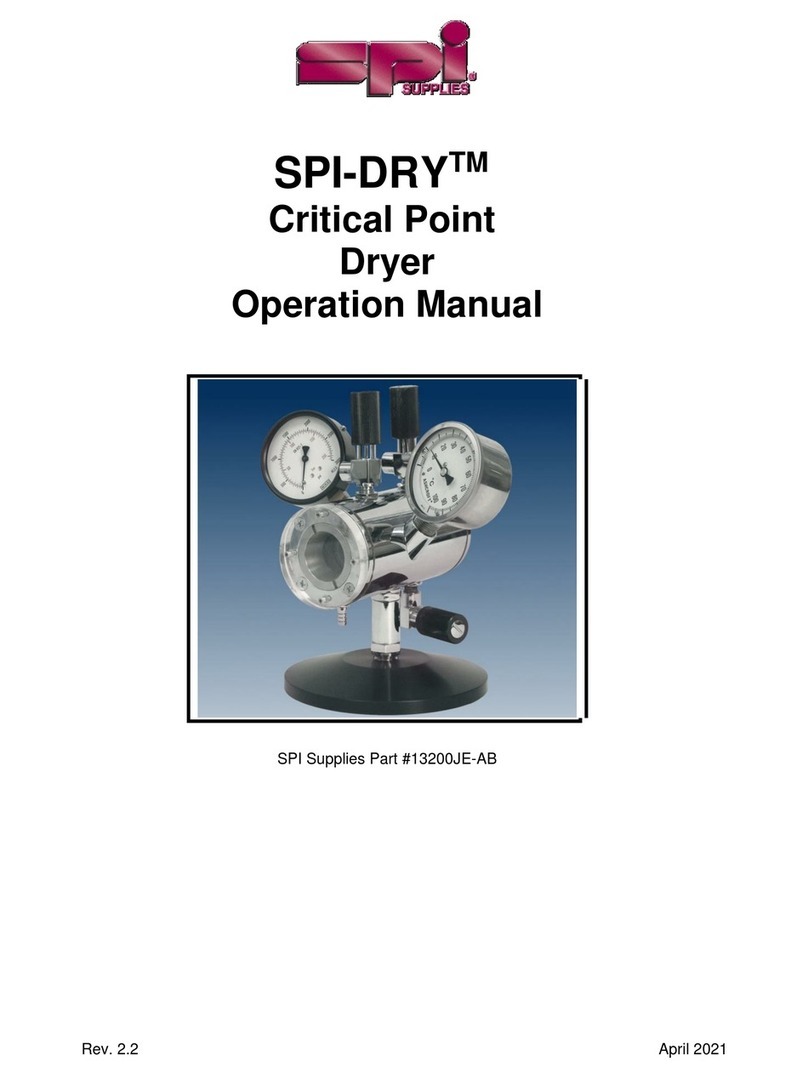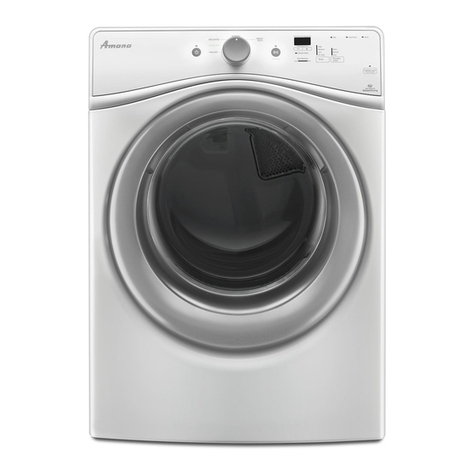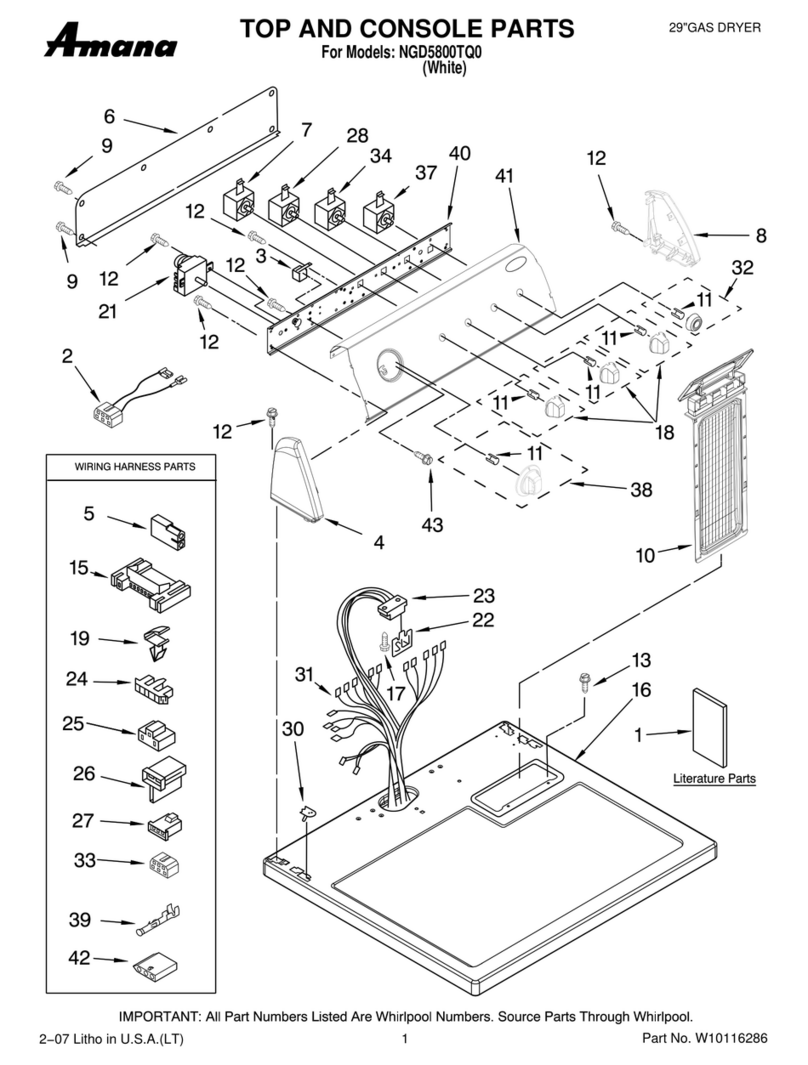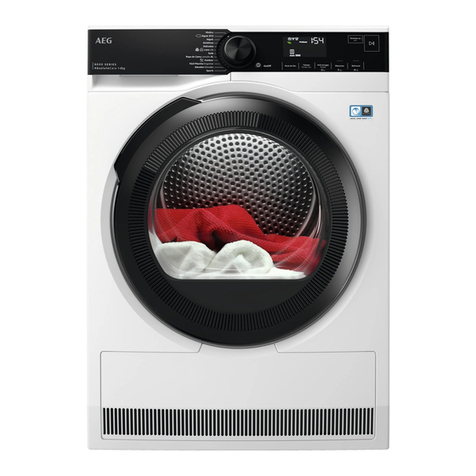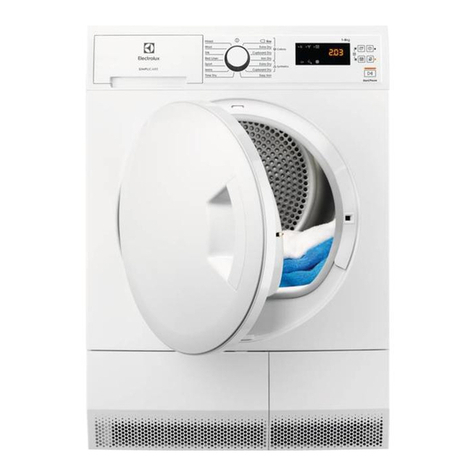
4
DRYER SAFETY
nDo not install or store the dryer where it will be exposed
to the weather.
nDo not tamper with controls.
nClean dryer lint screen before or after each load.
nDo not use this dryer without the lint screen in place.
nDo not repair or replace any part of the dryer or attempt
any servicing unless specically recommended in
this Use and Care Guide or in published user-repair
instructions that you understand and have the skills
to carry out.
nDo not use fabric softeners or products to eliminate static
unless recommended by the manufacturer of the fabric
softener or product.
nDo not use heat to dry articles containing foam rubber
or similarly textured rubber-like materials.
nThe nal part of a tumble dryer cycle occurs without
heat (cool-down cycle) to ensure that the articles are left
at a temperature that ensures that the items will not be
damaged.
nWARNING: Never stop a tumble dryer before the end
of the drying cycle unless all items are quickly removed
and spread out so that the heat is dissipated. (Avoids risk
of spontaneous combustion).
nIn case of electrical supply failure, remove the load
quickly and spread it out to avoid risk of spontaneous
combustion.
nKeep area around the exhaust opening and adjacent
surrounding areas free from the accumulation of lint, dust,
and dirt.
nThe fresh-air ventilation openings into the room and into
the dryer must not be blocked or sealed.
nEmergency stop control: After installation, access to
mains plug or disconnection from mains supply via a
double-pole switch must be ensured at all times in order
to ensure immediate deactivation of the dryer in case of
emergency.
nThe interior of the dryer and dryer exhaust vent should be
cleaned periodically by qualied service personnel.
nSee “Electrical Requirements” section in “Installation
Requirements” for earthing instructions.
nThe dryer shall be disconnected from its power source
during service and when replacing parts. If the removal
of the plug is foreseen, it shall be clearly indicated that it
be possible for the operator to conrm the removal of the
plug from any point of access.
If this is not possible due to the construction of the
appliance or its installation, a disconnection with a
locking system in the isolated position shall be provided.
IMPORTANT SAFETY INSTRUCTIONS
WARNING: To reduce the risk of re, electric shock, or injury to persons when using the dryer, follow basic precautions,
including the following:
SAVE THESE INSTRUCTIONS
nRead all instructions before using the dryer.
nThis dryer is intended only for drying clothes and textiles
that have been washed in water. Do not use for any other
purpose.
nDo not place items exposed to cooking oils in your dryer.
Items contaminated with cooking oils may contribute to
a chemical reaction that could cause a load to catch re.
nTo reduce the risk of re due to contaminated loads, the
nal part of a tumble dryer cycle occurs without heat
(cool down period). Avoid stopping a tumble dryer before
the end of the drying cycle unless all items are quickly
removed and spread out so that the heat is dissipated.
nIf it is unavoidable that fabrics that contain vegetable or
cooking oil or that have been contaminated by hair care
products be placed in a tumble dryer, they should rst
be washed in hot water with extra detergent – this will
reduce, but not eliminate the hazard.
nDo not dry articles that have been previously
cleaned in, washed in, soaked in, or spotted with petrol,
dry-cleaning solvents, other ammable, or explosive
substances as they give off vapors that could ignite
or explode.
nItems that have been soiled with substances such
as acetone, alcohol, petrol, kerosene, spot removers,
turpentine, waxes, and wax removers should be washed
in hot water with extra detergent before being dried in
the dryer.
nDo not dry unwashed items in the dryer.
nDo not use this dryer if industrial chemicals have been
used for cleaning. The possible presence of residual
quantities of aggressive or decomposed chemicals in
the load may produce damage to the dryer and harmful
fumes.
nDo not allow children to play on or in the dryer. Close
supervision of children is necessary when the dryer is
used near children.
nThis dryer is not intended for use by persons (including
children) with reduced physical, sensory, or mental
capabilities, or lack of experience or knowledge,
unless they have been given supervision or instruction
concerning use of the dryer by a person responsible
for their safety.
nBefore the dryer is removed from service or discarded,
remove the door to the dryer compartment.
nDo not reach into the dryer if the drum is moving.
nOpening the dryer door will stop the function of the dryer.
nWhen loading or re-loading the dryer, avoid touching hot
metal parts of the drum (burn risk).
nIf drum rotation is blocked due to trapped textiles,
disconnect the dryer from the electrical supply before
gently removing the blockage.
nIf the dryer is not heating, or appears to be defective or
damaged, do not use it. Contact the owner.





